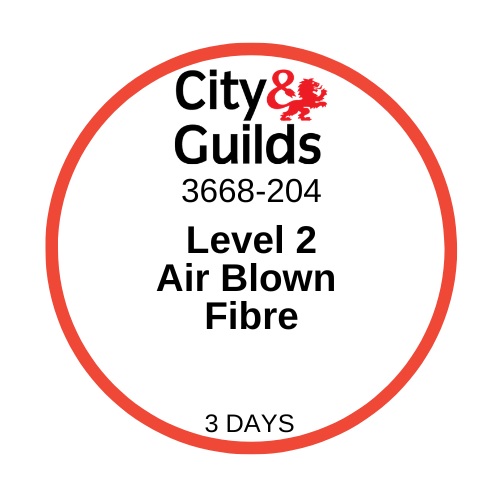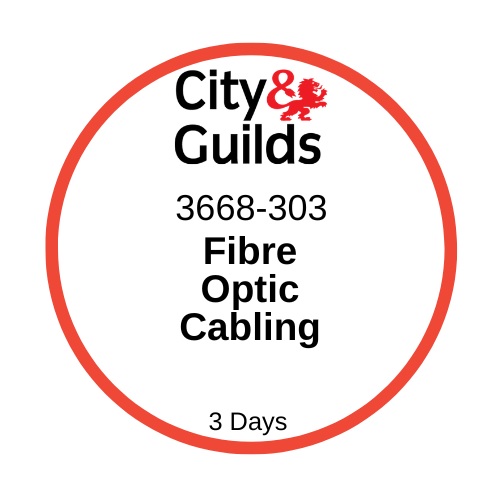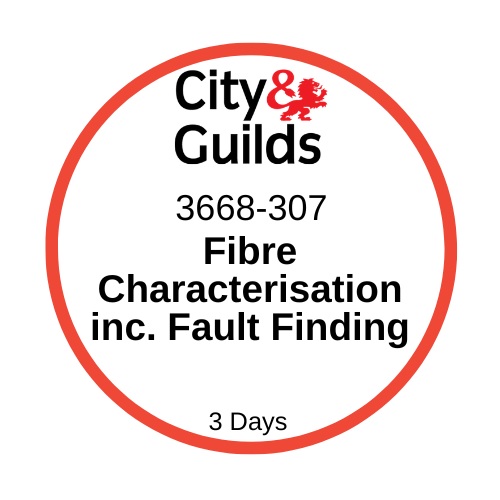CITY & GUILDS NETWORK DESIGN & PLANNING COURSES – 3668 – 03, Unit 301, 302 & 309 Level 3 Design and Planning External Enterprise Networks Full Award
£1,953.60 Inc.VAT | £1,628.00 Ex.VAT
CITY & GUILDS NETWORK DESIGN & PLANNING COURSES – 3668 – 03, Unit 301, 302 & 309 Level 3 Design and Planning External Enterprise Networks Full Award
This 5 Day Design and Planning External Enterprise Networks Unit 301, 302 & 309 course aims to provide delegates with an understanding of the industry standards and requirements when designing and planning external fibre networks. Delegates will have the opportunity to develop knowledge and a practical understanding of the various techniques, skills and documentation that are necessary for planning external fibre networks.
In addition, delegates will develop an understanding of the Health and Safety practices, relevant primary legislation and other codes of practice, which are regarded as the pre-requisites for conducting any on-site surveys and assessments.
As part of planning processes, delegates will gain a significant understanding of the correct procedures, when designing a network using other licensed operators’ infrastructure including distribution network operator (DNO) overhead networks and Physical Infrastructure Access (PIA). Delegates will consider in depth, dedicated “stand alone” network designs, including local planning considerations etc, alongside and cost control/project management.
CORE MODULES:
Unit 301: The aim of this unit is to enable delegates to gain an understanding of the safety, to develop and increase the knowledge required for safety, including safe working practices and behaviours, whether working in an internal network and in the external network, including underground, overhead and the public highway.
Unit 302: The aim of this unit is to enable delegates to gain an understanding of the fundamental of telecoms transmission technologies.
Our training centre is located in Harlow in the South East of England just off the M25. We can also deliver courses at your location by arrangement if you have a suitable workspace.
*use voucher code tct5 at checkout for 5% discount
Description
CITY & GUILDS NETWORK DESIGN & PLANNING COURSES – 3668 – 03, Unit 301, 302 & 309 Level 3 Design and Planning External Enterprise Networks Full Award
Course details…
Availability
Dates on request
Duration
5 Days
Course Content
- Describe and interpret topological designs for fibre optic networks
- Describe and explain network planning decisions when scoping work
- Interpret a plan and prepare a preliminary site survey using assured routes, for both underground and overhead networks
- Identify predesigned network routes including the placement of network furniture
- Identify network dimensioning to ensure efficient fibre distribution and network coverage.
- Describe the hazards and controls associated with various environmental conditions
- Describe the standards, legislation and regulations which apply when undertaking site surveys.
- Describe and gather sufficient technical and regulatory information to be able to identify availability and feasibility of proposed routes
- Plan the collection of information in a time scale suitable for achieving demand
- Interpret information, access, and import evidence into an equivalent Generic Network Mapping System.
- Prepare and produce planning documentation in accordance with standards and demand
Unit 301: Safe Working Practices and Behaviours:
- Describe the primary safety legislation and safety regulations relevant to the communications cabling and telecommunications industry.
- Describe key factors of health and safety, personal health and wellbeing
- Describe comprehensive risk assessments, method statements and permit to work in all aspects of underground, overhead and internal networks.
- The principles of conducting a site survey
- Describe and produce a plan for a road works guarding configuration set up
- Describe the deployment of road works guarding in accordance with a site plan.
- Confined spaces including underground chamber safety access
- Responding appropriately to emergencies.
- Working at heights including electrical hazards
- Describe and identify asbestos hazards and legal requirements
- Describe and identify the correct fire stopping materials as appropriate
- Describe the SSOW: safe system of work for voltage/metal/stud detection to identify hidden services and the selection of a safe place to drill.
- Describe processes for carrying out effective communication with customers appropriately.
- Describe the processes for effective communication with peers
- Describe the processes for effective communication with manager.
Unit 302: Telecoms Fundamentals:
- Describe the characteristics of transmission technologies
- Describe the applications in digital networks.
- Describe the uses of different types of media associated with data and telecommunications networks.
- Describe the characteristics of different media that are used as part of data and telecommunications networks.
- Describe data transmission methods used as part of data and telecommunications networks.
- Describe the role of the organisations that are responsible for establishing telecoms and data network standards
- Describe the layers of the OSI model and function of each layer, referencing the TCP/IP model.
- Describe the purpose of standards associated with data and telecommunications networks
- Describe the role of protocols in data and telecommunications networks.
Assessment
Candidates are individually assessed by a number of timed assignments.
Please note:
All candidates associated assignments are marked internally by a nominated and City and Guilds approved assessor.
These assignments will be subject to a quality audit by the awarding body
Price Breakdown
This course is subject to vat and is inclusive of all examination fees.
Certificates are sent via email as PDF. If you require a Hard Copy Certificate £5.00 P&P is required.
Additional information
| PRODUCT TYPE | TRAINING COURSES, NETWORK DESIGN & PLANNING COURSES |
|---|
Related products
Contact Us
Fax: 01322 553922
Bownet Cable Management Systems Ltd.
Registered address:
23 Acorn Industrial Park
Crayford Road
Dartford
Kent DA1 4AL
Registered in England No. 2358940
VAT No. 625 607149
sales@bownet.co.uk
Offices & Trade Counter
Monday - Friday
Useful Information
About Bownet CMS
Safe and Secure









Follow Us: